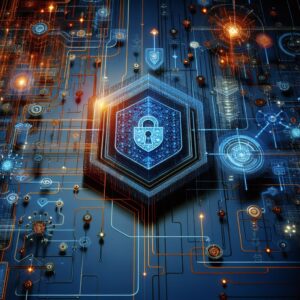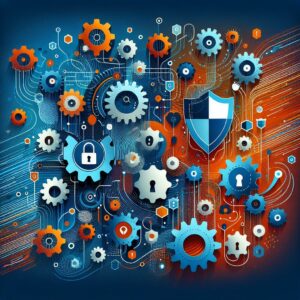The Critical Role of IT in Modern Business
Imagine a workplace where every employee stands as a vigilant guardian against cyberthreats. A place where cybersecurity isn’t just a protocol, but a mindset deeply ingrained in the organization’s DNA. As we navigate the era of hybrid work, achieving this vision isn’t just ideal — it’s a necessity.
While implementing robust security controls and cutting-edge tools is crucial, the true strength of any cybersecurity strategy lies in empowering your workforce to prioritize security. Without their buy-in and active participation, even the most advanced defenses can be rendered ineffective.
Building a security-first culture in a hybrid work environment is undoubtedly a complex task, but it’s far from impossible. It requires a comprehensive cybersecurity strategy that not only involves but also empowers your workforce. Let’s explore how to create such a strategy and delve into its key components.
The Foundation: Key Components of an Effective Cybersecurity Strategy
1. Perimeter-less Technology
In the hybrid work model, employees collaborate and contribute from various locations, often switching between office and remote settings. This fluid work environment demands a shift in how we approach security.
Action Steps:
- Invest in cloud-based SaaS applications that are accessible from anywhere, anytime.
- Implement Zero-Trust architecture, a security concept centered on the principle of “never trust, always verify.”
- Deploy robust identity and access management (IAM) solutions to ensure secure access regardless of location.
2. Documented Policies and Procedures
Clear, well-documented security policies and procedures are the backbone of any effective cybersecurity strategy. Without proper documentation, staff may struggle to understand the purpose or steps involved in security measures, leading to a lack of buy-in and inconsistent implementation.
Action Steps:
- Identify critical IT policies and procedures relevant to your organization.
- Document these policies in clear, accessible language.
- Share the documentation with relevant teams and staff members.
- Establish a regular review cycle to keep policies up-to-date and aligned with evolving threats and business needs.
3. Security Awareness Training Programs
Your employees are the first line of defense against cyberattacks. Equipping them with the knowledge and skills to recognize and respond to threats is crucial in building a security-first culture.
Action Steps:
- Develop interactive training programs covering key areas such as phishing, ransomware, password security, and social engineering.
- Create engaging training videos and a comprehensive knowledge repository dedicated to security protocols and standard operating procedures (SOPs).
- Reinforce learning through routine tests, simulations, and real-world scenario exercises.
- Consider gamification elements to increase engagement and retention of security best practices.
4. Communication and Support Channels
In the face of a potential security threat, every second counts. Clear communication and support channels ensure that threats are handled swiftly and effectively.
Action Steps:
- Define and document the process for reporting security incidents.
- Ensure every staff member knows how to raise an alarm, whom to contact, and what steps to take after reporting an incident.
- Outline approved tools for communication and collaboration, discouraging the use of personal apps for official business.
- Establish a dedicated support channel for security-related queries and concerns.
5. Friction-Free Systems and Strategies
Security measures that feel cumbersome or disruptive to workflows are likely to be circumvented. To foster a security-first culture, it’s crucial to align security systems and strategies with existing workflows for a seamless user experience.
Action Steps:
- Regularly evaluate security measures from a user experience perspective.
- Seek feedback from employees on the usability of security tools and processes.
- Invest in solutions that offer robust security without compromising on efficiency.
- Continuously refine and optimize security processes based on user feedback and emerging technologies.
Cultivating a Security-First Mindset
Beyond the technical components, building a security-first culture requires a shift in mindset across the organization. Here are some strategies to foster this cultural change:
- Lead by Example: Ensure that leadership consistently demonstrates commitment to security best practices.
- Celebrate Security Wins: Recognize and reward employees who consistently adhere to security protocols or who identify and report potential threats.
- Transparent Communication: Regularly share updates on the organization’s security posture, including both successes and areas for improvement.
- Continuous Learning: Encourage ongoing education and provide resources for employees to deepen their understanding of cybersecurity.
- Cross-Departmental Collaboration: Foster a sense of shared responsibility by involving all departments in security initiatives.
The Road Ahead
Building a security-first culture is an ongoing journey, especially in a hybrid work environment. It requires dedication, resources, and a commitment to continuous improvement. To succeed, you need skilled staff, 24/7 support, and specialized tools tailored to your organization’s unique needs.
However, you don’t have to navigate this complex landscape alone. Expert guidance can make all the difference in implementing and managing the necessary IT/cybersecurity and data security controls effectively.
Don’t wait for a breach to happen — take proactive steps to secure your business today. Consider reaching out to a managed service provider. We are cybersecurity experts who can provide a tailored strategy to elevate your organization’s security posture.
By investing in a comprehensive cybersecurity strategy and fostering a security-first culture, you’re not just protecting your assets — you’re building a resilient organization ready to thrive in the digital age.
Contact our award-winning MSP today for a free consultation and discover how we can transform your organization’s cybersecurity posture. Our expert team will assess your current security landscape, identify potential vulnerabilities, and create a tailored strategy to build a robust security-first culture in your hybrid workplace.
Note that the image at the top of this blog was created using LimeWire. Are you using generative AI?







